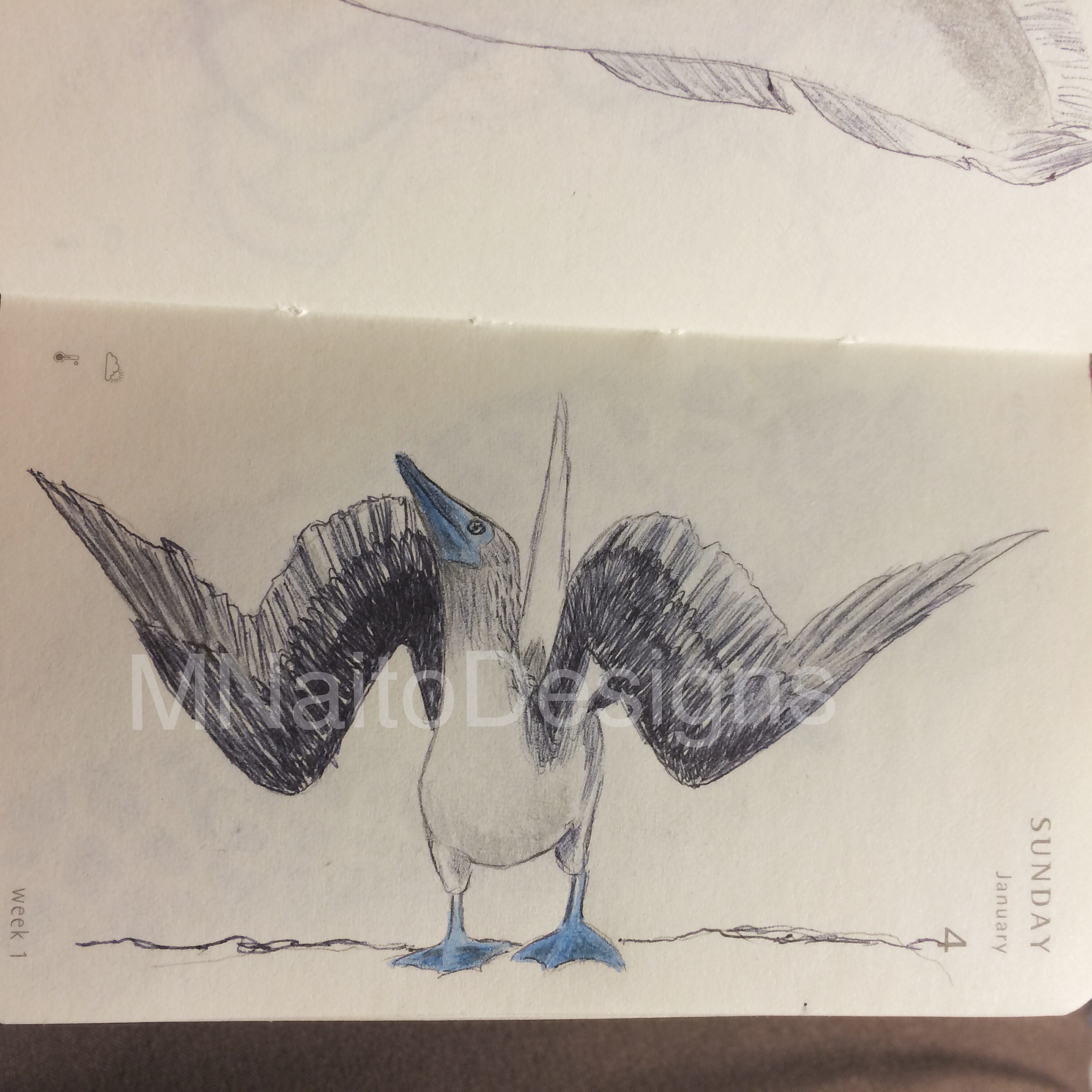The blue-footed booby, as its name would imply is a seabird with blue feet. The booby is about 32 inches long and weighs about 3.3 pounds. The female is slightly larger than the male. The color of their feet is derived from the pigments in their diet of fresh fish. The brightness of the blue can dull within 48 hours of not receiving proper nutrients. This is important when it comes to females selecting males for mating. The males will go through an elaborate ritual of extending their wings along with high-stepping to show off their feet. The females will select the males with the most elaborate dance and the brightest feet. The brightest feet are an indicator of the healthiest males.
The blue-footed booby can be found along the coasts of the Pacific Ocean, from the Gulf of California to Peru. About half of all breeding pairs nest on the Galapagos Islands. They are social birds, generally hunting in groups. They form monogamous pairs. The breeding cycle happens every 8-9 months. The male will flaunt his blue feet, strutting around in front of the female. He will also present nesting materials to her. His dance also includes “sky pointing,” where he poses with his beak, wings, and tail pointed skyward. Females will lay 1-2 eggs at a time. Not all of the eggs hatch at once. This results in size differences between siblings. If food is scarce, this could result in older siblings killing the younger ones for food.
The blue-footed booby will fly over the ocean searching for schools of fish, such as sardines, anchovies, and mackerel. One booby will signal the others that they’ve spotted a school and then they will dive in for their catch. They will swim underwater to chase fish. They dive from heights of 33-330 feet and reach depths of 82 feet below the surface of the water.
While the blue-footed booby is of Least Concern in regards to Conservation Status, a slight decline in numbers on the Galapagos Islands has been noted. It hasn’t yet been proven, but it seems the decline in numbers is tied to the decline in sardines, a main staple in the booby’s diet. This may lead to poor nutrition and decreased drive to mate. – Wikipedia.
This blog contains Amazon Affiliate links. As an Amazon Associate, I may earn from qualifying purchases.


Recent Comments